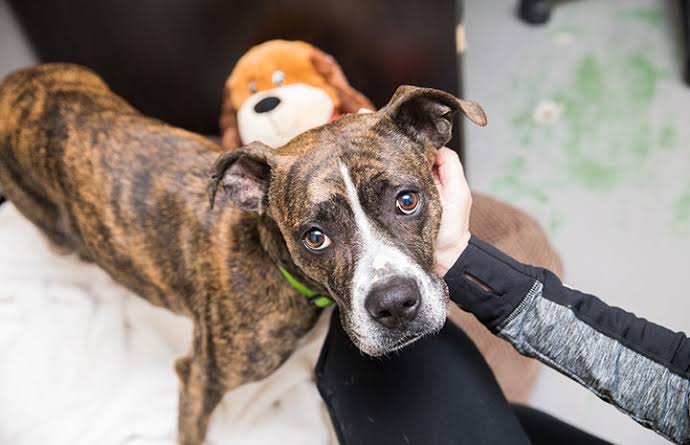Let’s be real—when you bring a rabbit into your home, you’re not just getting a cute, fluffy friend. You’re basically signing up for a mini-roommate who has strong opinions, loves snacks, and sometimes… forgets where the bathroom is. But here’s the good news: rabbits can be litter trained, and it’s actually way easier than most people think.
In fact, rabbits are naturally clean animals. Given the right setup and a little consistency, they’ll do most of the work for you. Whether you’ve just welcomed a young bunny or you’re trying to help an older rescue find their bathroom groove, this guide is going to walk you through 7 easy, effective steps to litter box success.
No judgment, no fluff—just real advice for real rabbit parents.
Why Litter Train Your Rabbit?
Before we hop into the how-to, let’s talk about the why. Because trust me—this isn’t just about saving your carpets (although, yes, that too).
Here’s what litter training your rabbit can do:
- Keeps your home cleaner and odor-free
- Makes daily cleanup faster and easier
- Reduces the chance of urine scald or dirty feet
- Helps you monitor your rabbit’s health (pee and poop changes are red flags!)
- Makes free-roaming possible (yes, bunnies can live like cats!)
So yeah—litter training isn’t just a convenience. It’s a core part of having a happy, healthy bunny in your home.
Step 1: Pick the Right Litter Box (It’s More Important Than You Think)
Rabbits aren’t tiny rodents—they’re more like little couch potatoes who love to chill in their “potty spot.” So that tiny corner box from the pet store? Probably not gonna cut it.
What to look for in a litter box:
- Low sides (3–5 inches) for easy entry, especially for seniors
- Large enough for your rabbit to sit and move comfortably
- High back or covered corner to catch those occasional “misses”
Many bunny parents actually use cat litter boxes, dishpans, or even storage bins with one side cut low. Trust me, your rabbit will appreciate the legroom.
Step 2: Choose Safe and Absorbent Litter
Okay, let’s talk litter. Not all litters are created equal, and some can actually be dangerous to your bunny’s health.
DO use:
- Paper-based litter (like CareFresh or Yesterday’s News)
- Wood pellets (as long as they’re not dusty or scented)
- Aspen shavings (avoid pine or cedar!)
AVOID:
- Clumping cat litter (dangerous if ingested)
- Clay litter (dusty and harmful to lungs)
- Scented litters (can irritate your bunny’s nose)
Layer the bottom of the box with about an inch or two, and you’re good to go. Bonus tip? Place a grate or hay rackabove the litter so your rabbit’s paws stay dry if you don’t clean it daily.
Step 3: Add Hay to the Mix (Yes, Seriously)
Here’s a little rabbit secret: rabbits love to eat and poop at the same time.
Yup, your rabbit wants dinner and a toilet in the same place. Weird? Maybe. Effective? Absolutely.
So, place a generous pile of fresh hay right in the litter box, or in a hay rack positioned so they can munch while sitting in the box. This encourages them to spend time there—and do their business.
Pro tip: Replace the hay daily, and spot clean the box every evening. Your rabbit will love you for it.
Step 4: Start Small—Then Expand Their Territory
When you’re just starting out, limit your rabbit’s space to a small area. Think pen, play yard, or even just a roomy enclosure. Rabbits are way easier to train when they’re not hopping across three rooms.
Once they consistently use the litter box, you can slowly expand their access to other areas.
How to do this:
- Give one room at a time
- Supervise new spaces
- Add extra litter boxes in big areas or corners they favor
Remember: every rabbit has their own opinion on where the bathroom should be. If they pick a corner, work with them—place a box there and let it become “the spot.”
Step 5: Catch Accidents (and Fix Them Fast)
Accidents will happen—it’s part of the process. But how you handle them makes a HUGE difference.
Here’s what to do:
- Soak up any urine with a paper towel
- Place the towel and a few poops into the litter box
- Clean the area thoroughly with white vinegar (removes scent)
- Place a litter box where the accident happened if it’s a repeat issue
Bunnies tend to go where they smell they’ve gone before. So don’t just wipe up messes—retrain the nose.
Also: Never yell or punish your rabbit. That’ll only stress them out, and a scared bunny is less likely to cooperate. Instead, reward them when they use the box with praise or a small treat.
Step 6: Neuter or Spay Your Bunny
Here’s the honest truth: Unfixed rabbits are WAY harder to litter train.
That’s because hormones kick in, and suddenly your sweet bunny thinks every square inch of your living room needs to be marked as territory.
If your rabbit is:
- Spraying urine
- Pooping everywhere on purpose
- Circling or mounting everything in sight
…they’re probably ready for a trip to the vet.
Spaying or neutering:
- Reduces marking behavior
- Calms hormonal aggression
- Makes litter training much easier
Most vets recommend doing this around 4–6 months old, but it’s safe for older rabbits too. Plus, it prevents reproductive cancers, which are super common in females.
Step 7: Stay Consistent (Because Bunnies Love Routine)
Rabbits thrive on routine. If you want them to keep using the litter box, you need to be consistent with their environment and care.
What helps:
- Clean the litter box at least every 1–2 days
- Replace hay daily to keep the box attractive
- Keep boxes in the same location if possible
- Use the same type of litter so they know what’s what
Also, be patient. Some rabbits get the hang of it in a day. Others take a week or two. If you’re working with a rescue or older bunny who’s never been trained, give them grace.
Troubleshooting Common Litter Box Issues
Here are a few quick fixes for problems you might run into:
1. My rabbit pees next to the box, not in it!
- The box might be too small or too high.
- Try a second box in that exact spot.
2. They poop everywhere, even after training.
- Pooping can still be a way to mark territory.
- Spaying/neutering helps a lot.
- Scoop up the poops and drop them in the box regularly.
3. They stopped using the box suddenly.
- Check for health issues (UTIs, bladder sludge).
- Did you change their litter or box location?
- Has anything stressed them out lately (new pet, loud noise)?
How Many Litter Boxes Does My Bunny Need?
Great question! The general rule: one box per room or per favorite hangout spot.
If your rabbit has free rein of your home, you might need multiple stations. And honestly, even if they use only one, having backups can be helpful if they ever get sick or have mobility issues.
Final Thoughts: Your Rabbit CAN Be Litter Trained
Training your rabbit to use a litter box isn’t just possible—it’s a total game-changer. It makes life easier for you, keeps your bunny healthier, and opens the door to letting them roam more freely.
Just remember:
- Be patient.
- Set them up for success.
- Reward progress.
- And above all, love the process.
Because nothing beats the pride of seeing your fluffy little friend hop into their box like a pro. It’s the rabbit version of potty-training success—and yes, it deserves a celebration (and maybe a carrot or two).



